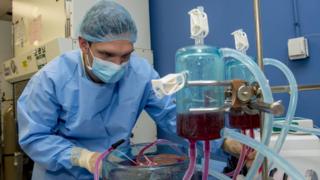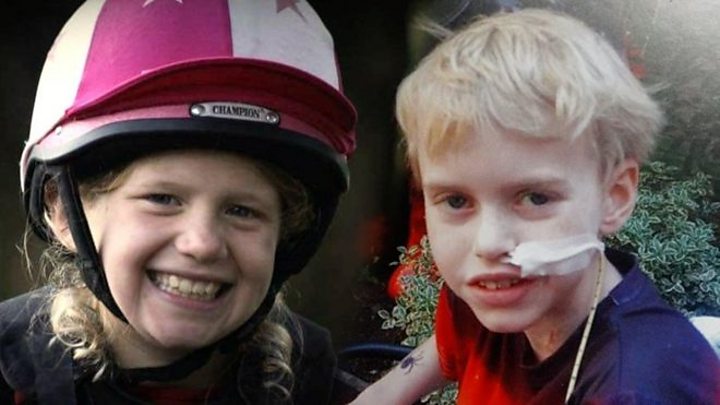‘Supercool’ method triples organ survival
 Image copyright Jeffrey Andree, Reinier de Vries and Korkut Uygun
Image copyright Jeffrey Andree, Reinier de Vries and Korkut Uygun Supercooling human livers to -4C triples the time they can be kept before transplant compared with putting them on ice, US researchers say.
It slows the metabolic rate to prevent damage, Nature Biotechnology reports.
It means organs can be kept viable for more than a day, which researchers say could revolutionise organ transplants.
The next step will be assessing how long supercooled organs function in large animals such as pigs, before moving to human clinical trials.
The team at Massachusetts General Hospital and Harvard Medical School pioneered the technology in rats five years ago.
The animal’s tiny livers were chilled while nutrients and oxygen were pumped through the organ’s blood vessels.
However, there were challenges going from a 10g (0.35oz) rat liver to a 1.5kg (3lb 5oz) human liver.
As organs get bigger there is a greater danger of ice crystals forming, which can rupture cells and kill tissue.
‘Quite phenomenal’
The solution was to prepare the liver for supercooling by using protective agents that prevented freezing.
Experiments on discarded human livers showed they could be kept for 27 hours, rather than the typical nine hours when the organs are stored on ice.
The research team said the results were “quite phenomenal”.

Media playback is unsupported on your device
One of the researchers, Dr Reinier de Vries, said: “This is a big breakthrough in organ preservation.
“This is the first time that we actually show that it is feasible to preserve human organs at sub-zero temperatures.”
‘Simulated transplant’
The livers functioned as expected – based on tests such as oxygen use, bile production and lactate metabolism, when they were brought back up to temperature.
They also survived a “simulated transplant” when they were connected back up to an artificial blood supply.
The researchers could not experiment on organs that would have been suitable for transplant.
But they believe organs that started off healthier could be preserved much longer.
“[It’s] in the order of days, not sure how many,” researcher Dr Korkut Uygun told BBC News.
“We obviously can only do these experiments with grafts that are not good enough for transplant and it is great that despite being organs that are already injured, our experiments can be preserved for over a day.”
Good match
The longer an organ can survive outside the body, the greater the chances of getting it to a patient that needs it.
It also gives more time for tests to ensure the donor organ is a good match for the patient.
The NHS has already started using a “warm liver” approach to keeping the organs going for longer.
They are connected to a perfusion machine, which keeps the livers at body temperature and gives them the oxygen and nutrients they need.
The super-cooling technique builds on this approach.
Dr Korkut Uygun said: “We’ll need both perfusion and super-cooling to really make a difference in the world.
“The ultimate goal here is true organ banking (for years), so it’s not like if we reach 24 hours the problem is solved and we can all go home.”
The British Liver Trust said hundreds of people died every year waiting for a transplant.

Media playback is unsupported on your device
Pamela Healy, the charity’s head, said: “Finding new ways to increase the number of organs available at any one time is vital to reduce waiting times and increase the chance of a successful transplantation taking place.
“This research project into increasing the number of livers available for transplant is welcomed. We await further research into this potentially exciting development.”
Follow James on Twitter.

